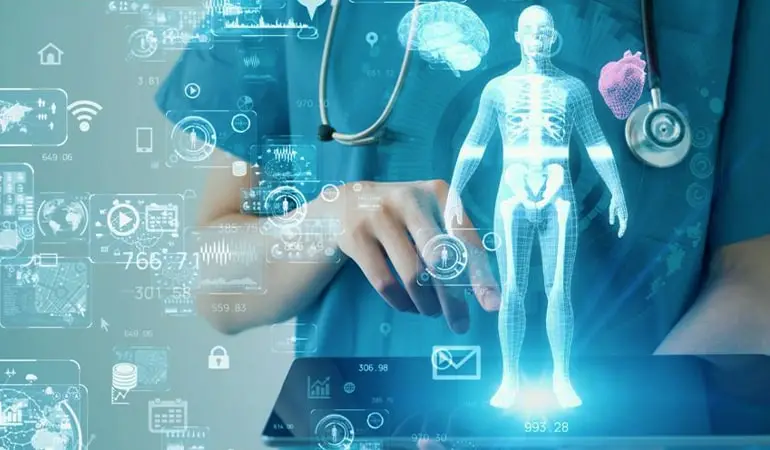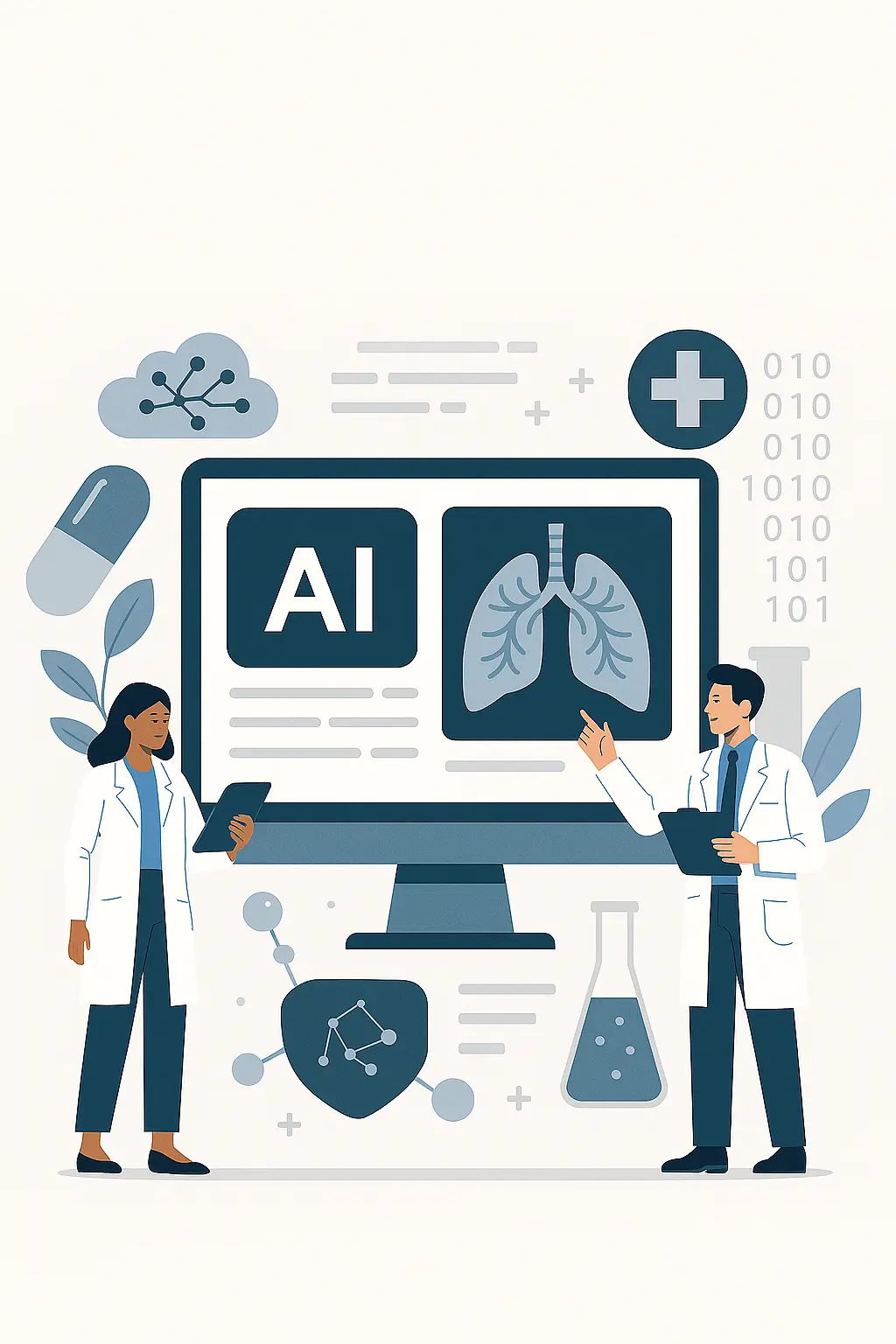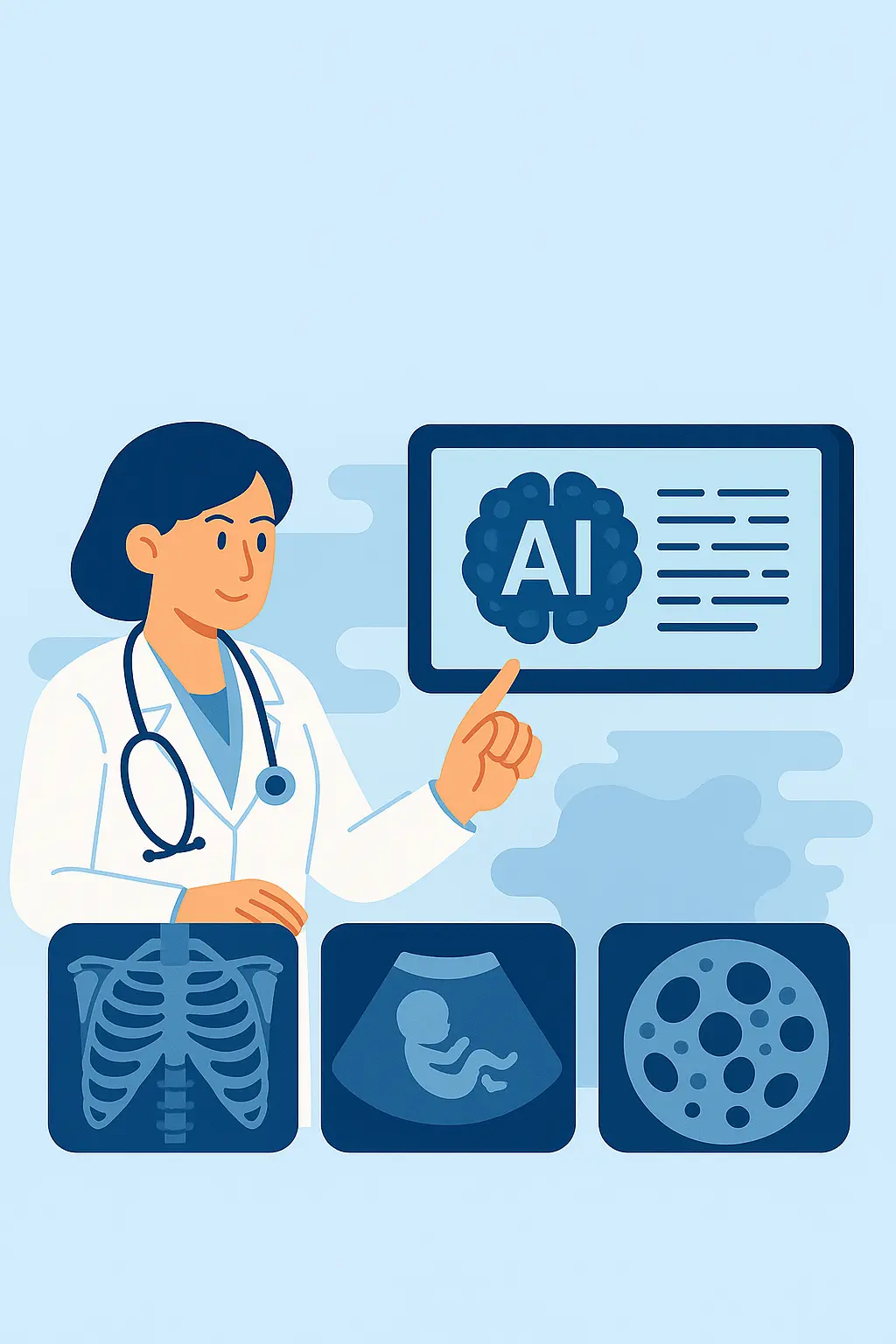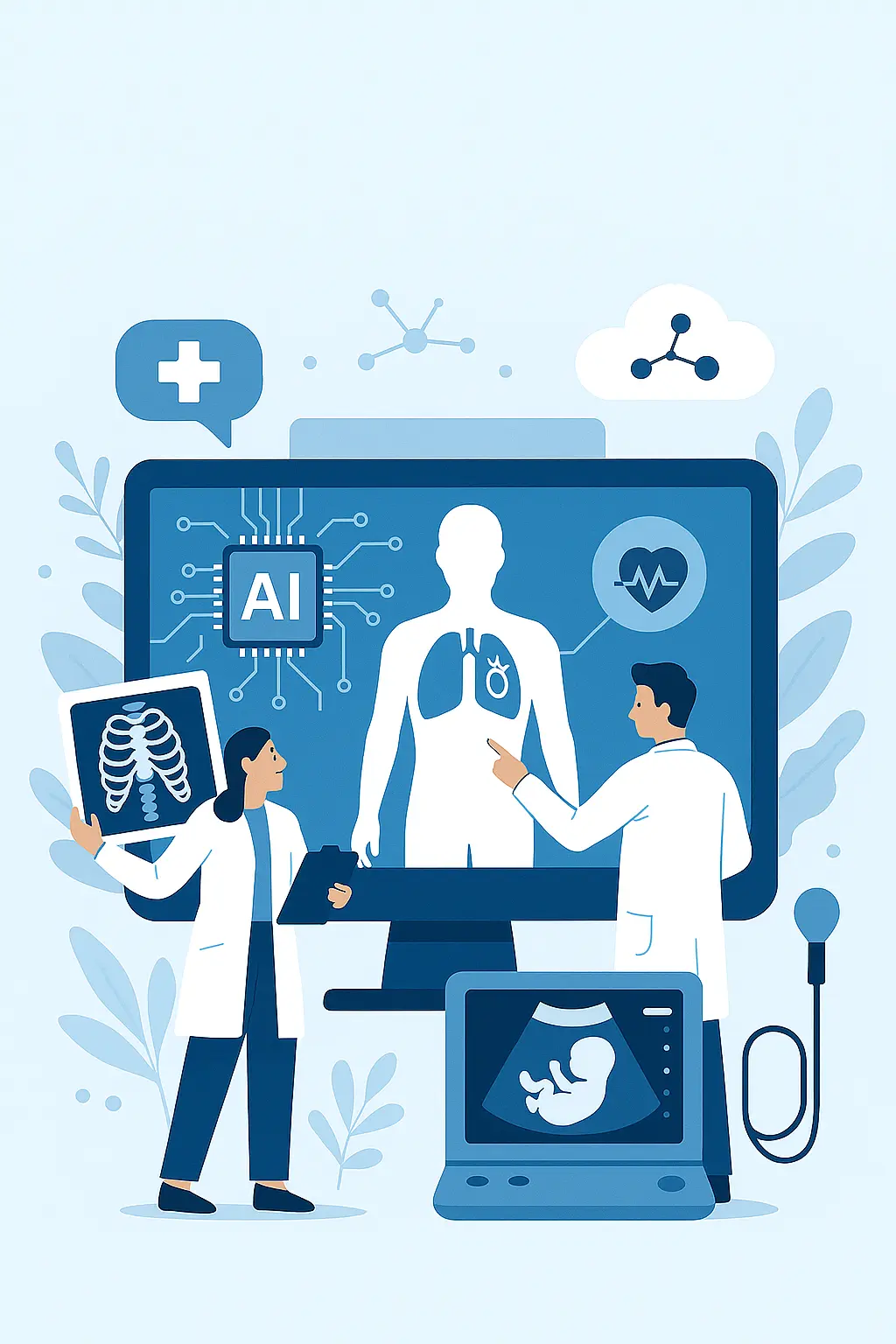
How AI is Revolutionizing Healthcare Diagnostics
Artificial Intelligence (AI) is rapidly transforming healthcare diagnostics by providing advanced tools that assist clinicians in early and accurate disease detection. By leveraging machine learning algorithms trained on vast amounts of medical data, AI systems can analyze medical images such as X-rays, MRIs, and CT scans with remarkable precision, often identifying abnormalities that may be missed by the human eye. This accelerates diagnosis and treatment plans, improving patient outcomes significantly. Beyond imaging, AI-powered tools are being used to analyze genetic information and patient histories to predict the likelihood of certain conditions and recommend personalized therapies. While challenges remain in integrating AI into clinical workflows and addressing concerns about data privacy, the potential for AI to revolutionize diagnostics is immense, promising a future where healthcare is more proactive, accurate, and efficient.
Healthcare · AI · Diagnostics
How AI Is Revolutionizing Healthcare Diagnostics
Artificial Intelligence (AI) is rapidly reshaping how clinicians detect, triage, and monitor disease. From flagging hidden abnormalities in radiology to predicting sepsis hours earlier than traditional tools, AI is becoming a quiet partner in the diagnostic process—speeding up decisions, reducing errors, and expanding access to expertise.
By Editorial Team ·

“AI doesn’t replace clinicians; it amplifies them—handling the repetitive so humans can focus on the complex.”
The Diagnostic Bottleneck AI Is Built to Solve
Healthcare generates oceans of data—images, waveform signals, labs, pathology slides, and free-text notes. The challenge isn’t collecting it; it’s interpreting it fast and consistently. Diagnostic backlogs, workforce shortages, and rising complexity all create friction between suspicion and certainty. AI thrives here because it can:
- Parse large datasets quickly and consistently
- Spot subtle patterns humans may miss (or tire of)
- Run 24/7 without fatigue
- Surface the right data to the right clinician at the right time
Imaging: From Second Reader to Always-On Triage
Radiology Assistants
AI models can pre-screen X-rays, CTs, and MRIs to flag probable findings and reorder worklists so urgent cases land on top. This triage reduces time-to-read and time-to-treatment.
What changes in practice
- Worklists auto-prioritize emergent scans
- Heatmaps/overlays show why a finding was flagged
- Fewer misses during high-volume shifts
Breast & Lung Screening
In high-throughput settings like mammography or lung cancer screening, AI acts as a “second pair of eyes,” reducing recall rates and catching subtle lesions.

Digital Pathology & Lab Medicine
Whole-slide imaging turns glass slides into gigapixel images. AI can quantify tumor features, detect metastases, or grade histology patterns with remarkable consistency.
Benefits
- Standardized scoring across sites
- Faster turnaround for high-volume cases
- Richer quantitative biomarkers for precision oncology
AI also monitors analyzers, detects outliers, and predicts sample quality issues—preventing delays and repeat draws.
Cardiology & Critical Care: Predict Before It Happens
Waveforms & Wearables
AI models analyze ECG strips, telemetry, and wearable data to detect arrhythmias, heart failure decompensation, or ischemic changes earlier.
Early Warning Systems
AI ingests vitals, labs, and notes to forecast risk—sepsis, deterioration, or readmission—hours before traditional scores.
“Prediction is only useful if it’s actionable—AI must plug into workflows, not just dashboards.”
| Signal | Model Output | Clinical Action |
|---|---|---|
| ECG telemetry | High risk of AFib in 48h | Start monitoring protocol |
| Vitals + labs | Sepsis risk ↑ (12h lead) | Early cultures & antibiotics |
Dermatology, Ophthalmology, and Point-of-Care Triage
AI image classifiers triage skin lesions, grade diabetic retinopathy, or assess wound healing—bringing subspecialty-grade triage to the front line.

Ambient & Workflow AI
“Ambient” AI listens during visits (with consent), drafts structured notes, and extracts problems and imaging indications—reducing cognitive load and improving documentation quality.
Guardrails: Bias, Explainability & Safety
- Representative data: Train/validate on diverse patient populations.
- Explainability: Provide visual/text rationales.
- Prospective validation: Test on real-world data before go-live.
- Human-in-the-loop: Keep final judgment with clinicians.
- Continuous monitoring: Track performance and drift.
Privacy, Security, and Compliance
- De-identification for research and training
- Federated learning for cross-institution training
- Strong access controls and audit logs
- Compliance with HIPAA/GDPR & regulatory requirements
- Explicit consent for ambient tools
Buying vs. Building: Adoption Playbook
- Identify the pain point
- Check for proven, approved tools
- Ensure data readiness & quality
- Design pilot with clear metrics
- Integrate into workflows (EHR, PACS)
- Set up governance & monitoring
- Train staff and iterate
- Scale only if outcomes improve
What’s Next
- Multimodal AI: Combining imaging, labs, notes, and genomics.
- Edge AI: On-device inference for low-latency triage.
- Foundation models: Fine-tuned large models for cross-specialty reasoning.
- Federated learning: Training without sharing raw data.
Bottom Line
AI is not a silver bullet—it’s a force multiplier. The real revolution is operational: better prioritization, earlier warnings, consistent grading, and time returned to clinicians and patients.
“The promise of AI in diagnostics isn’t to make medicine less human—it’s to give clinicians more time to practice it.”